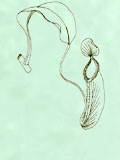
Invertebrates (pdf)
New record site of Nannophya pygmaea – in the heart of Tai Lam Country Park
by
T.K.Woo
Senior Park Ranger
Agriculture, Fisheries and Conservation Department
There has been no new published record for the smallest anisopteran dragonfly, Nannophya pygmaea in Hong Kong since 1996. In July 2002, a large and healthy colony of Nannophya pygmaea was found in the central part of Tai Lam Country Park. Over two hundred mature adults are recorded and confirmed breeding there. A further site is also reported in Luk Keng.
Nannophya pygmaea is only 15 mm long with a wing span of about 20 mm and was first recorded in Hong Kong by Lai (1971). It is one of the smallest dragonflies in the world (Wilson 1995). Wilson (1997) reported five sites of Nannophya pygmaea in Hong Kong, namely Kau Sai Chau, Pat Sin Leng, Yung Shu O, Cheung Sheung and Tai Tong. The habitats range from acidic weedy ponds to swampy marsh areas. Two new sites were reported in Tin Fu Tsai and Luk Keng in 2002. Both are swampy marsh areas of long abandoned paddy fields. Further details of the Tin Fu Tsai site are provided here.
In early July 2002, a new site was found at an abandoned paddy at about 220 metres above sea level, near the village of Tin Fu Tsai (Figs. 1 and 2), which is completely inside Tai Lam Country Park. It is about 4 km away from the nearest reported site at Tai Tong, Yuen Long.
With a total area of 1.5 hectares, the breeding site is well established. It supports a large population of Nannophya pygmaea and is believed to be one of the largest habitats of this species in Hong Kong. It is well-sheltered by surrounding low hills and maintained swampy almost throughout the year, making its unique environment favourable for the present colonization.
On 7 July, 2002, over 20 individuals (Figs. 3-6), with at least 4 females, were observed at the new site. They are short flyers and perch mostly on the tips of low-lying grass. Copulation and oviposition at waterlogged muddy pots were also observed.
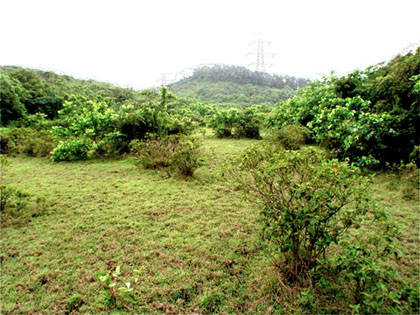 |
|
Fig.1.
Swampy site with patches of shrubs
|
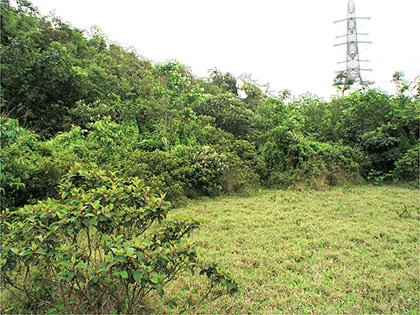 |
|
Fig.2.
The site is well-sheltered by surrounding hills
|
In one visit conducted at the end of July, 2002, over 200 individuals were counted. The number was considered astonishingly high for a single count.
Field staff of Agriculture, Fisheries and Conservation Department (AFCD) working at Tai Lam Country Park believe that this small red dragonfly has been living there for over a decade. They were observed during tree planting and fire fighting at adjacent areas on a few occasions.
In early April, 2003, larvae of Nannophya pygmaea (Fig. 7) were found dwelling on the muddy surface of the paddy at the site. Their body measured 4 mm, and they were barely visible to the naked eye. Several individuals were collected and one of them, later identified to be a female, emerged on 30 April (Fig. 8). The final instar size reached 8.5 mm. The site was re-visited on the same day and about twenty tenerals of males and females were found with immature colouration, showing that the emergence had just begun.
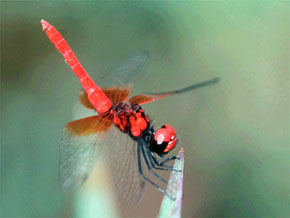 |
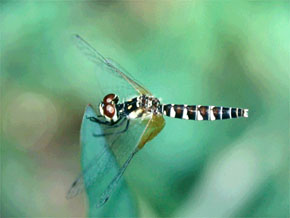 |
| Fig.3. Nannophya pygmaea, adult male | Fig.4. Nannophya pygmaea, adult female |
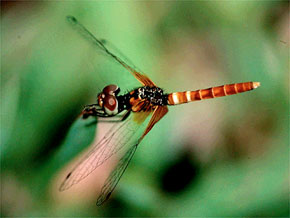 |
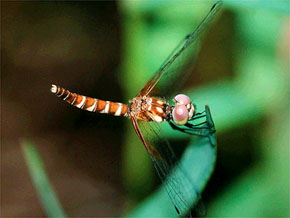 |
| Fig.5. Nannophya pygmaea, teneral male | Fig.6- Nannophya pygmaea, teneral female |
Observations show that mature larvae of Nannophya pygmaea normally began emerging in late April, continuing for months through July and with a peak in June. Adults are seen on the wing from late April to September.
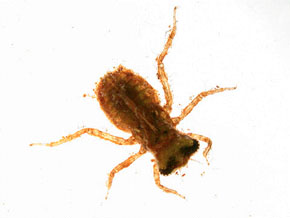 |
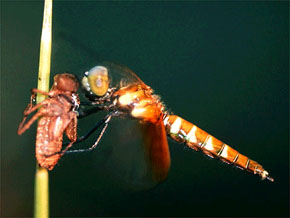 |
| Fig.7. A larva of Nannophya pygmaea, female | Fig.8. Nannophya pygmaea just emerged, female |
The discovery of this site is significant for better understanding the habitat of Nannophya pygmaea. Importantly, this valuable habitat is totally within Tai Lam Country Park under statutory protection. This would help ensure the survival of this species within this forested park. Monitoring and further study will be conducted by staff of AFCD.
Bibliography
Lai, Y.L. (1971). An Introduction to the Odonata of Hong Kong.13: 1-48.
Wilson, K.D.P. (1997). An Annotated Checklist of the Hong Kong Dragonflies with Recommendations for Their Conservation. 38 pp.
Wilson, K. D.P. (1995). Hong Kong Dragonflies, Urban Council of Hong Kong. pp. 155-157.
(Photos: W.L. Hui. © AFCD)
|
|
P.3-5 |
|
Porcupine! |
 Copyright © 2000 |
